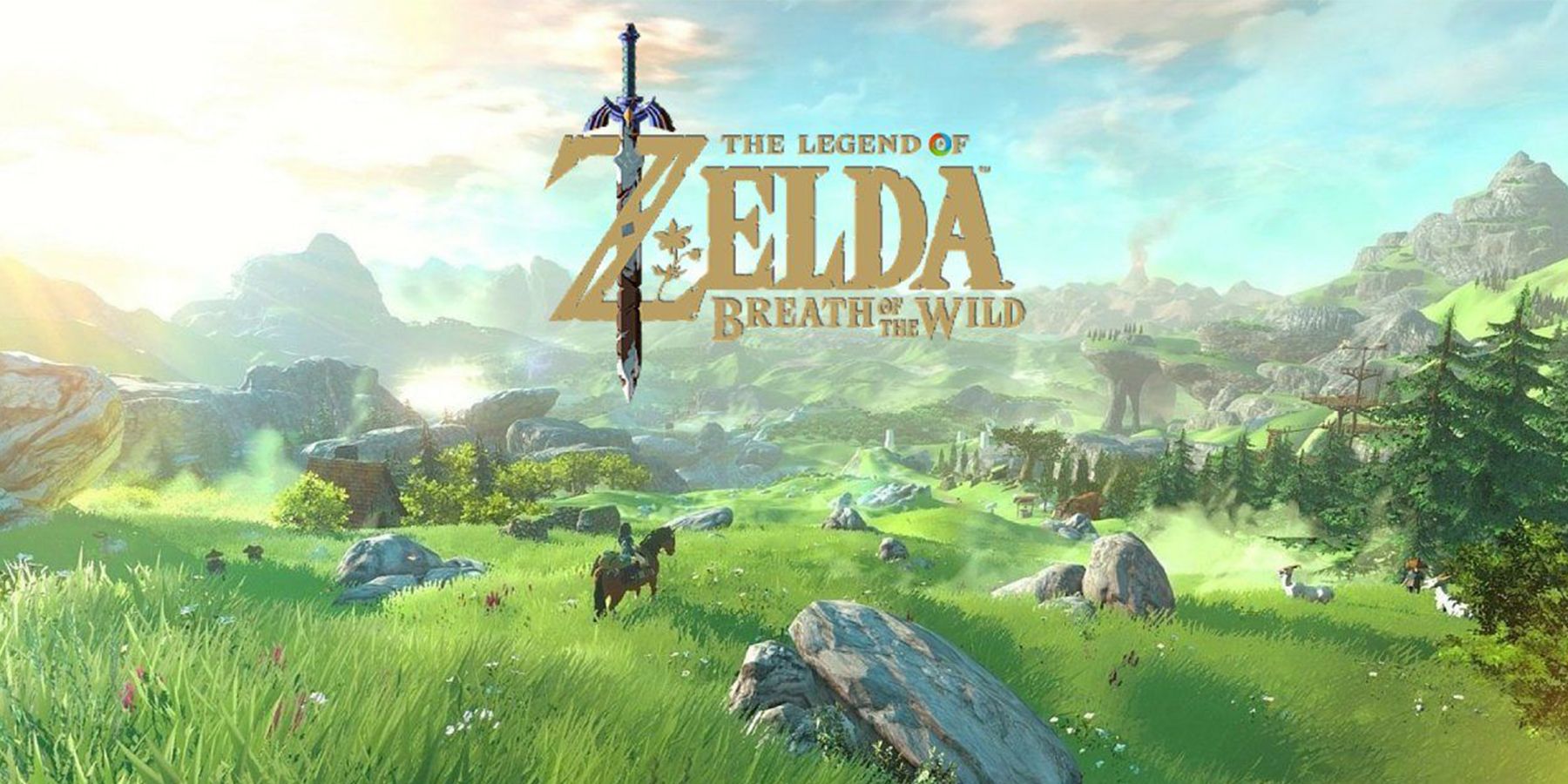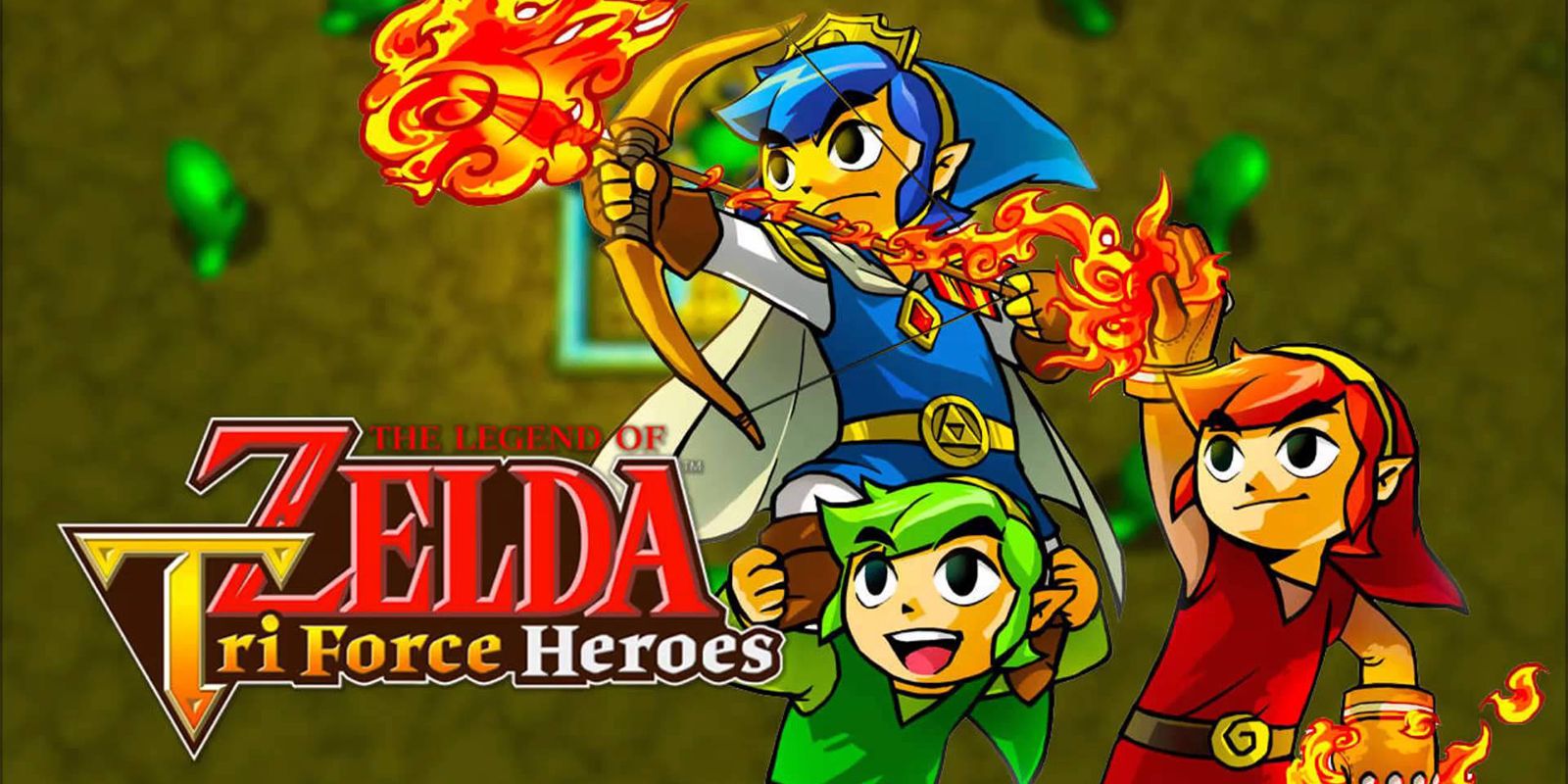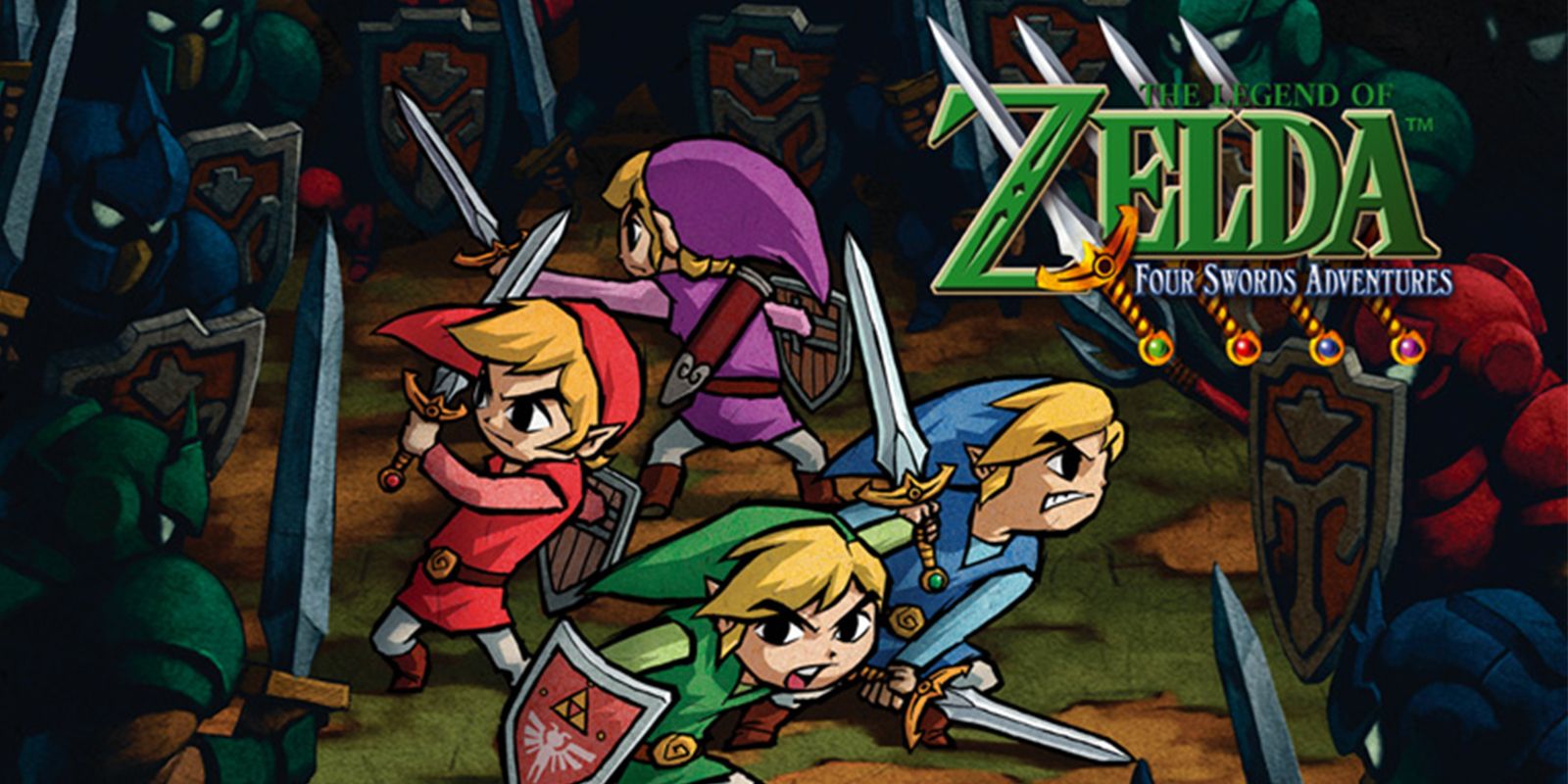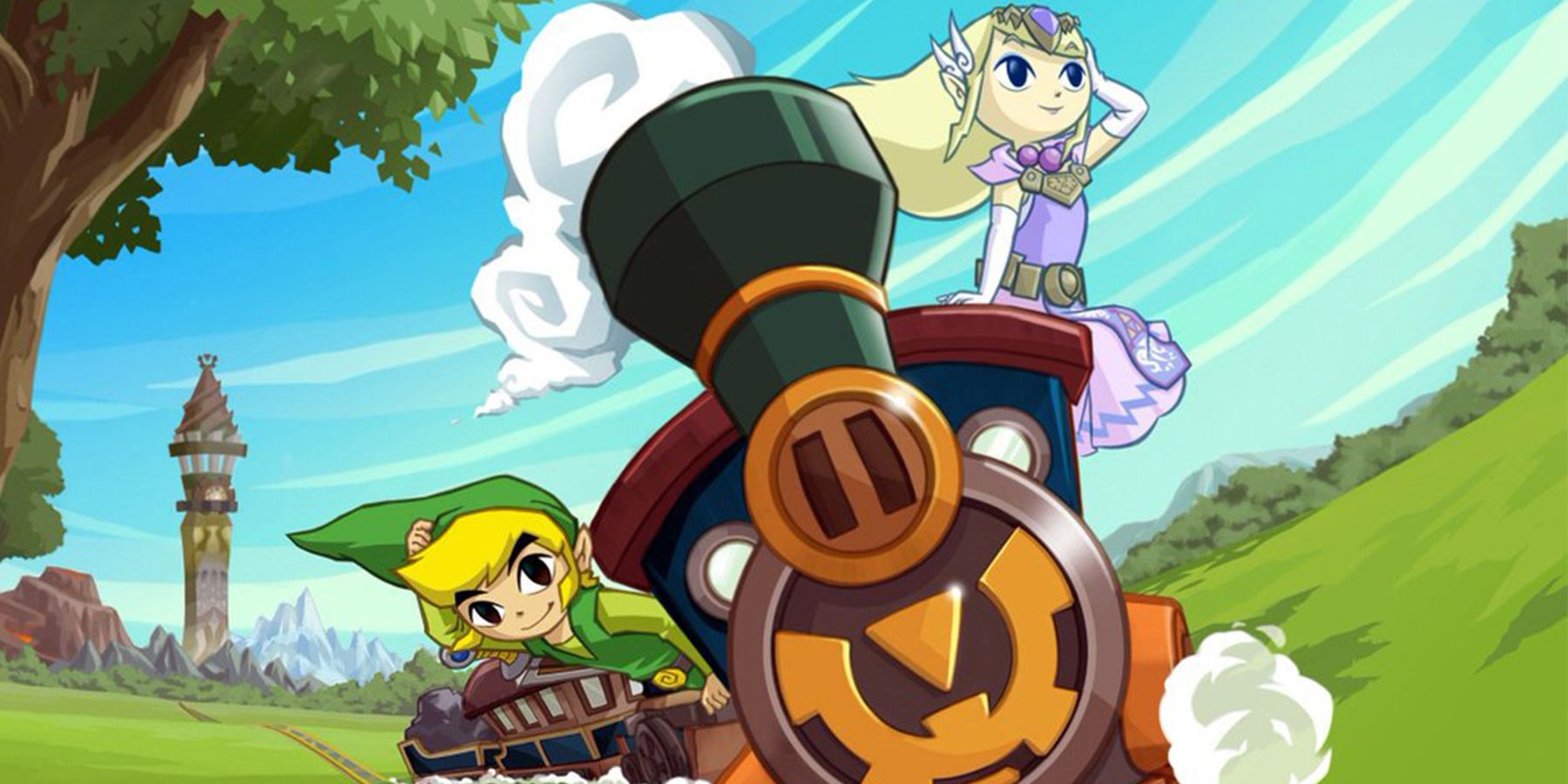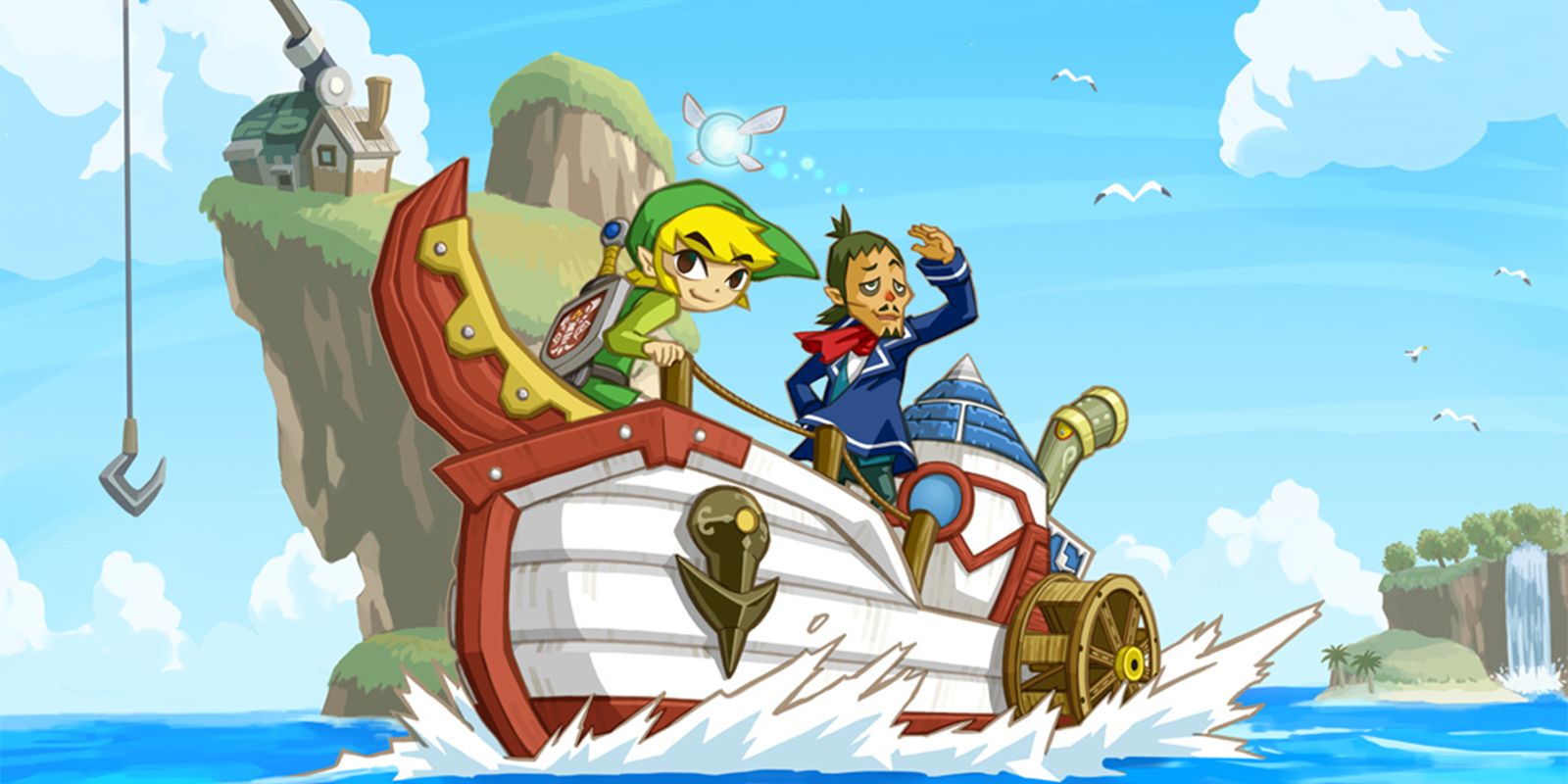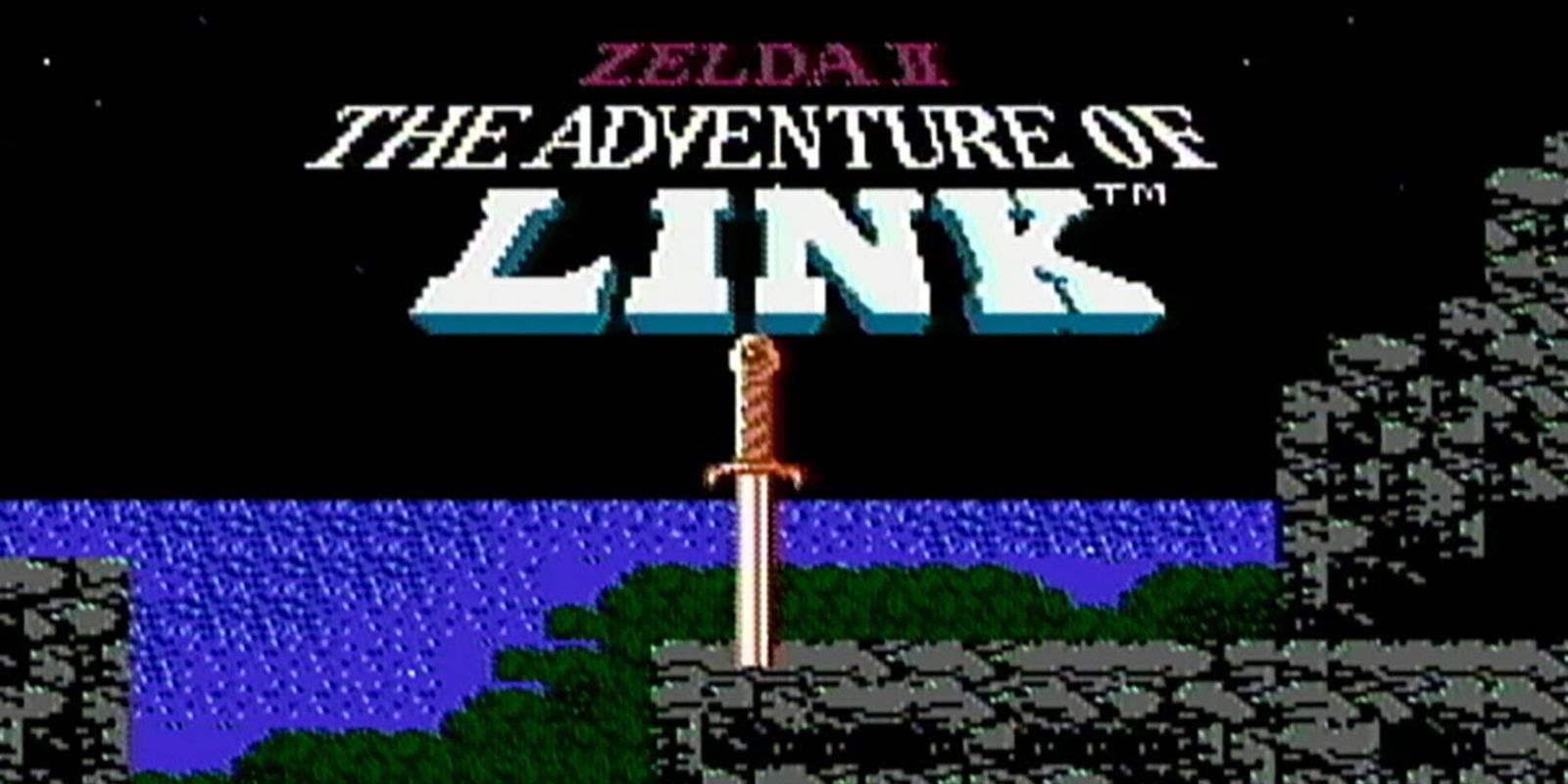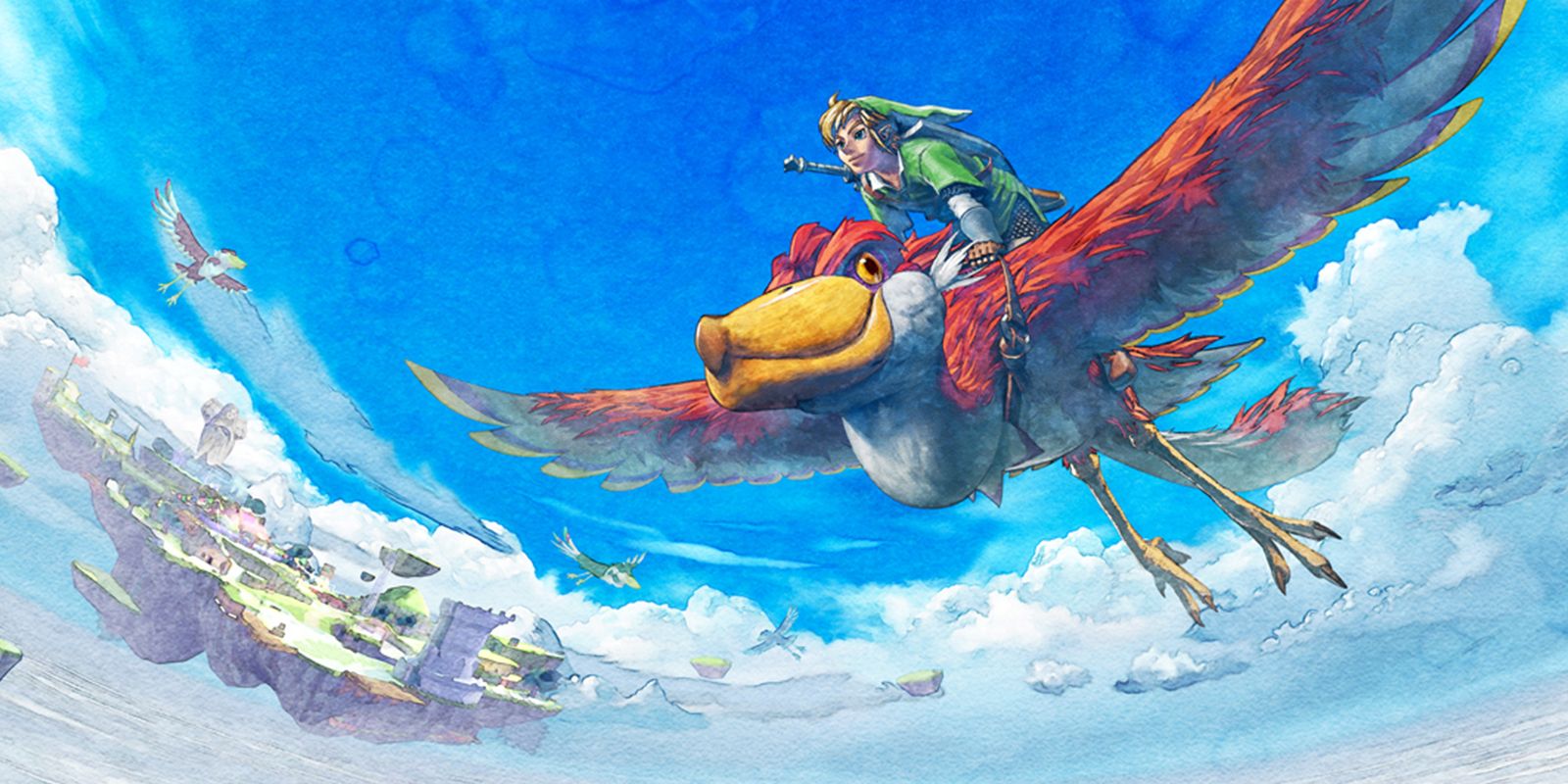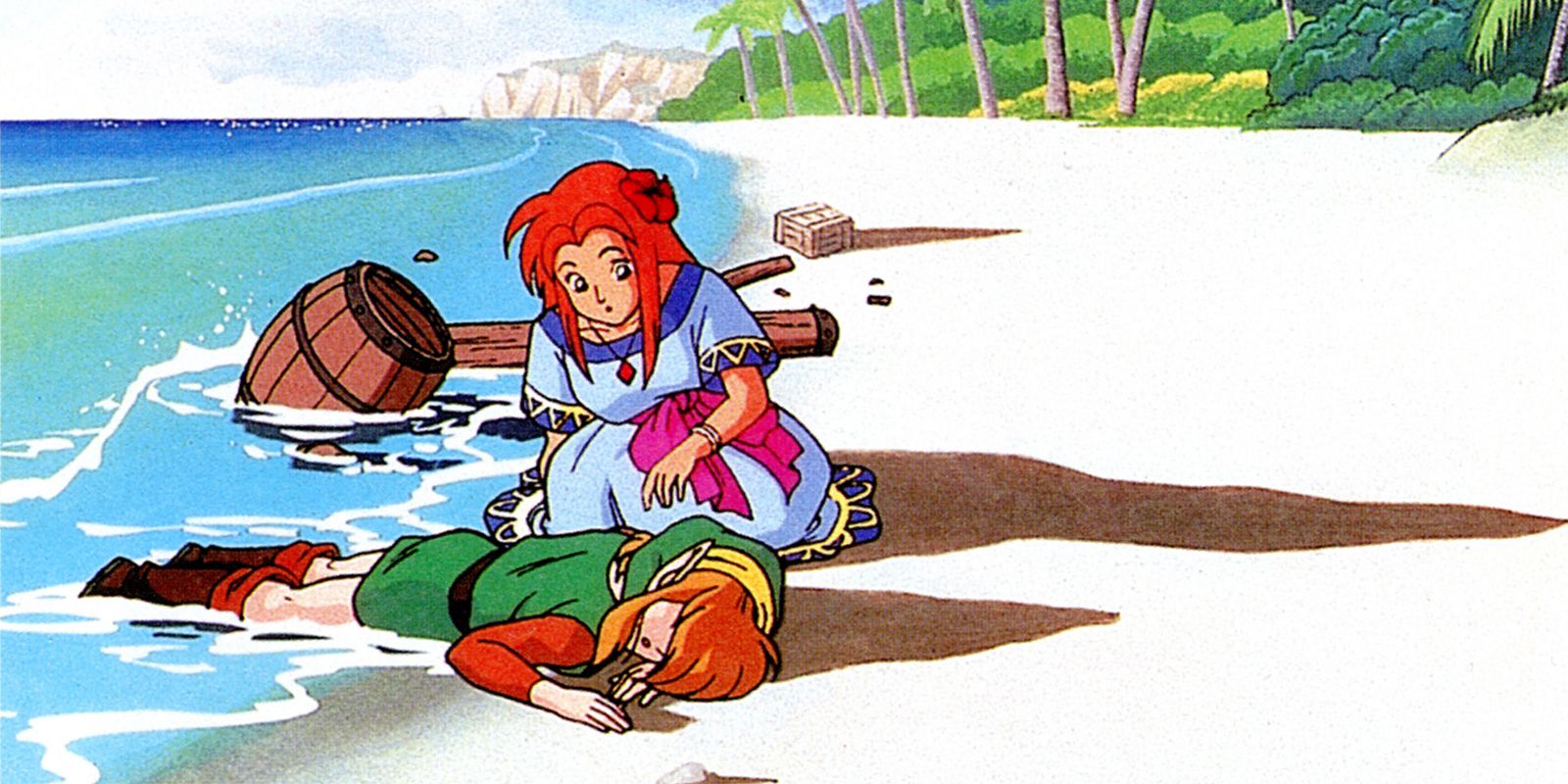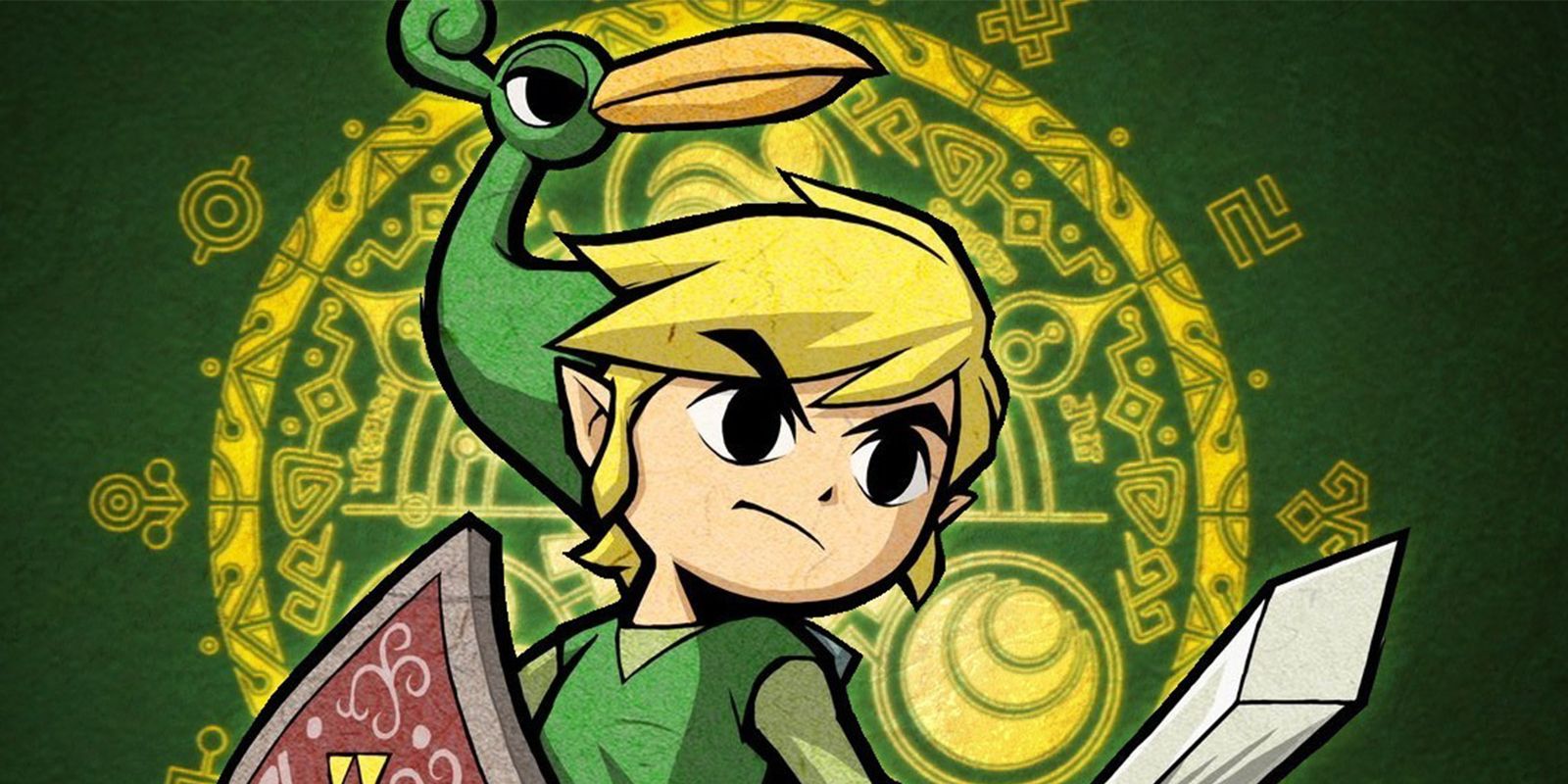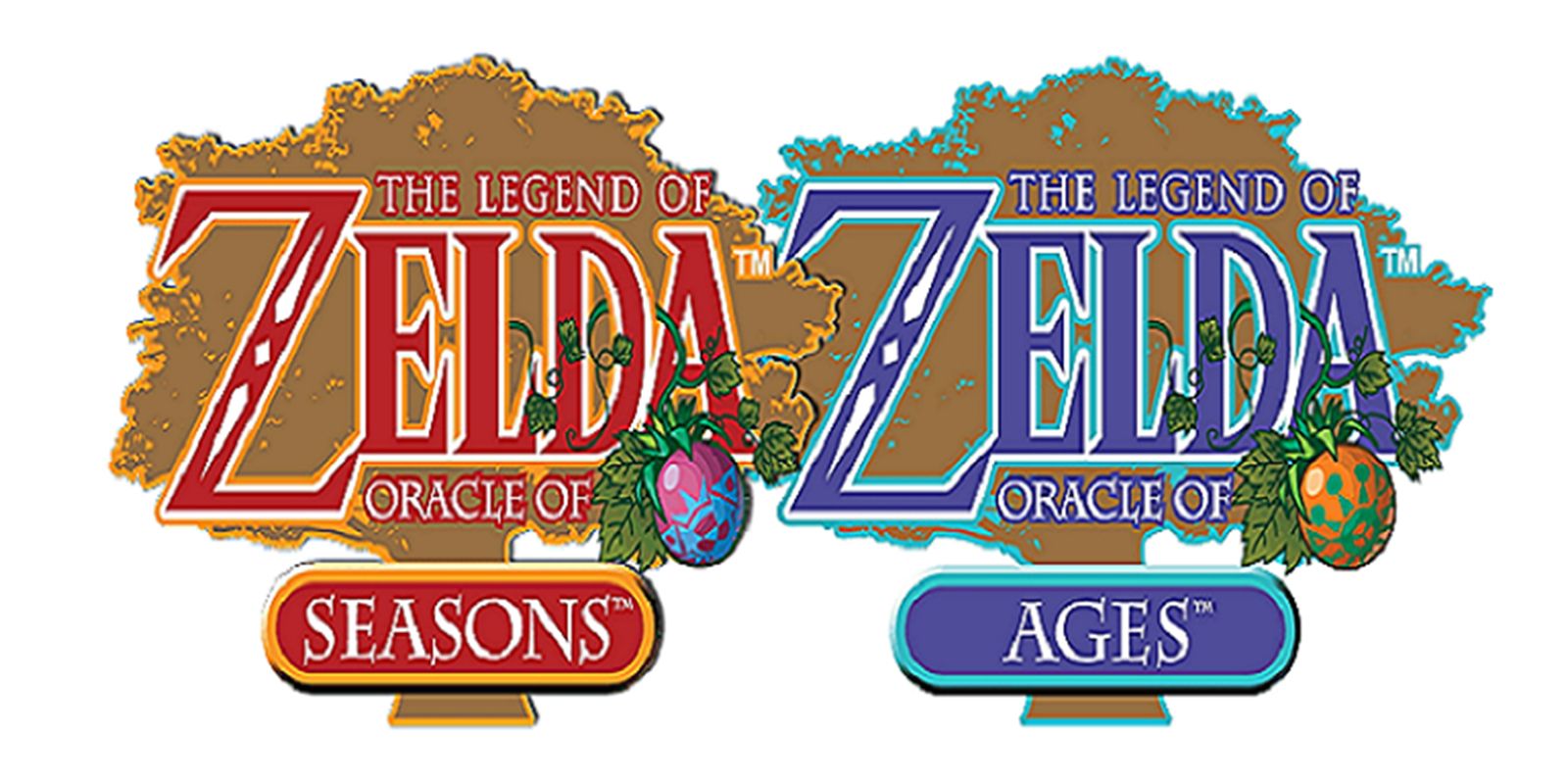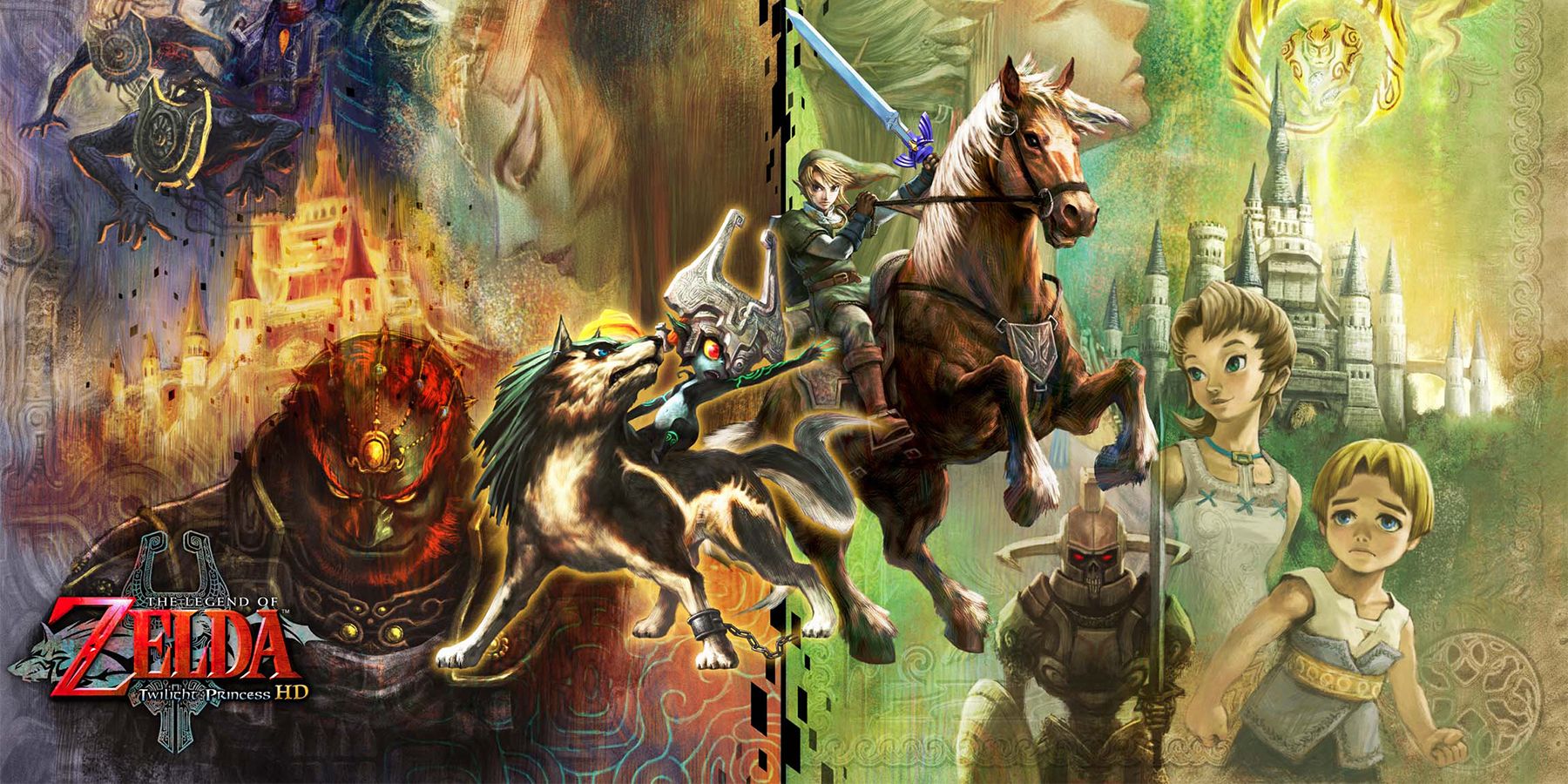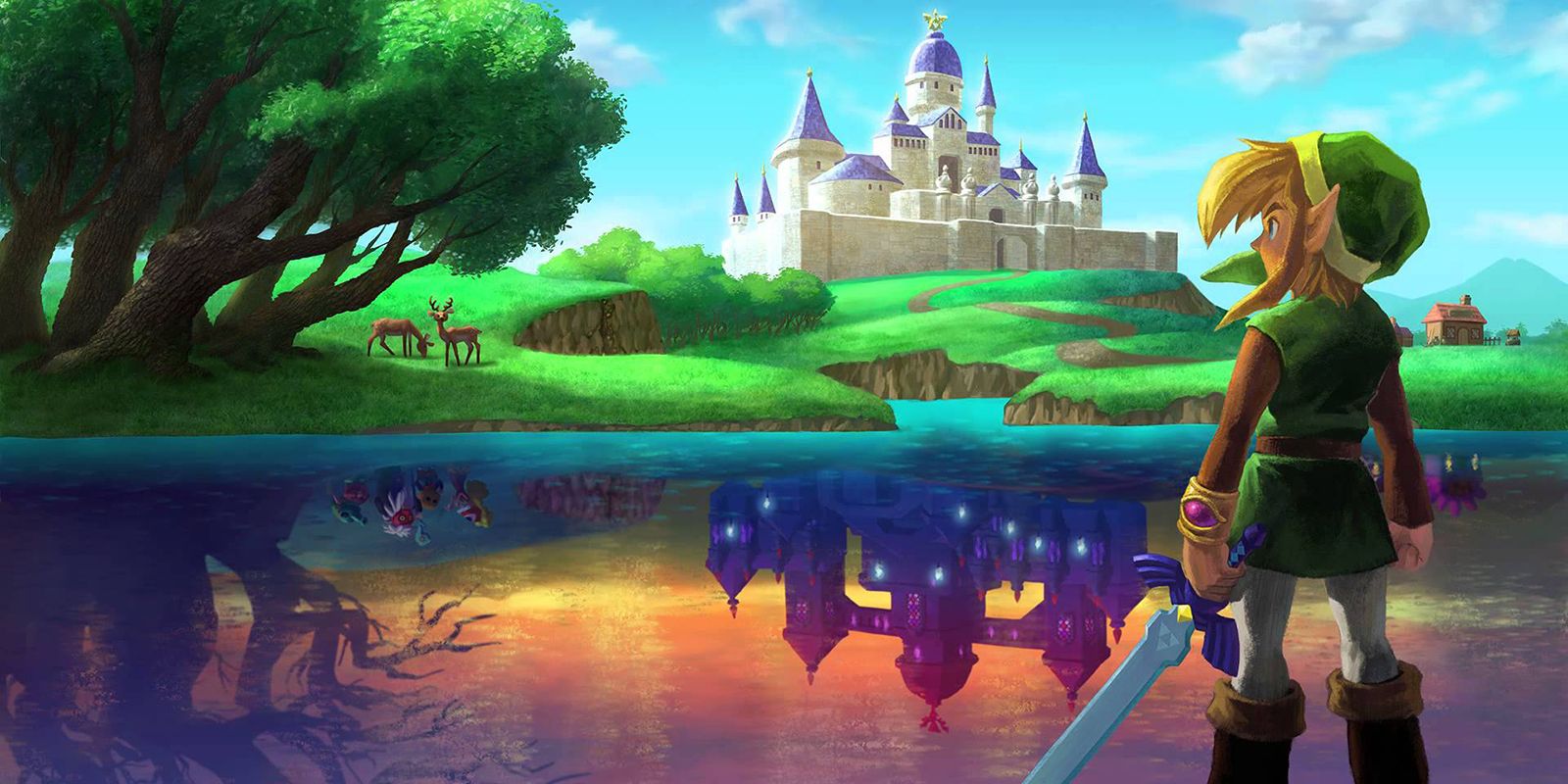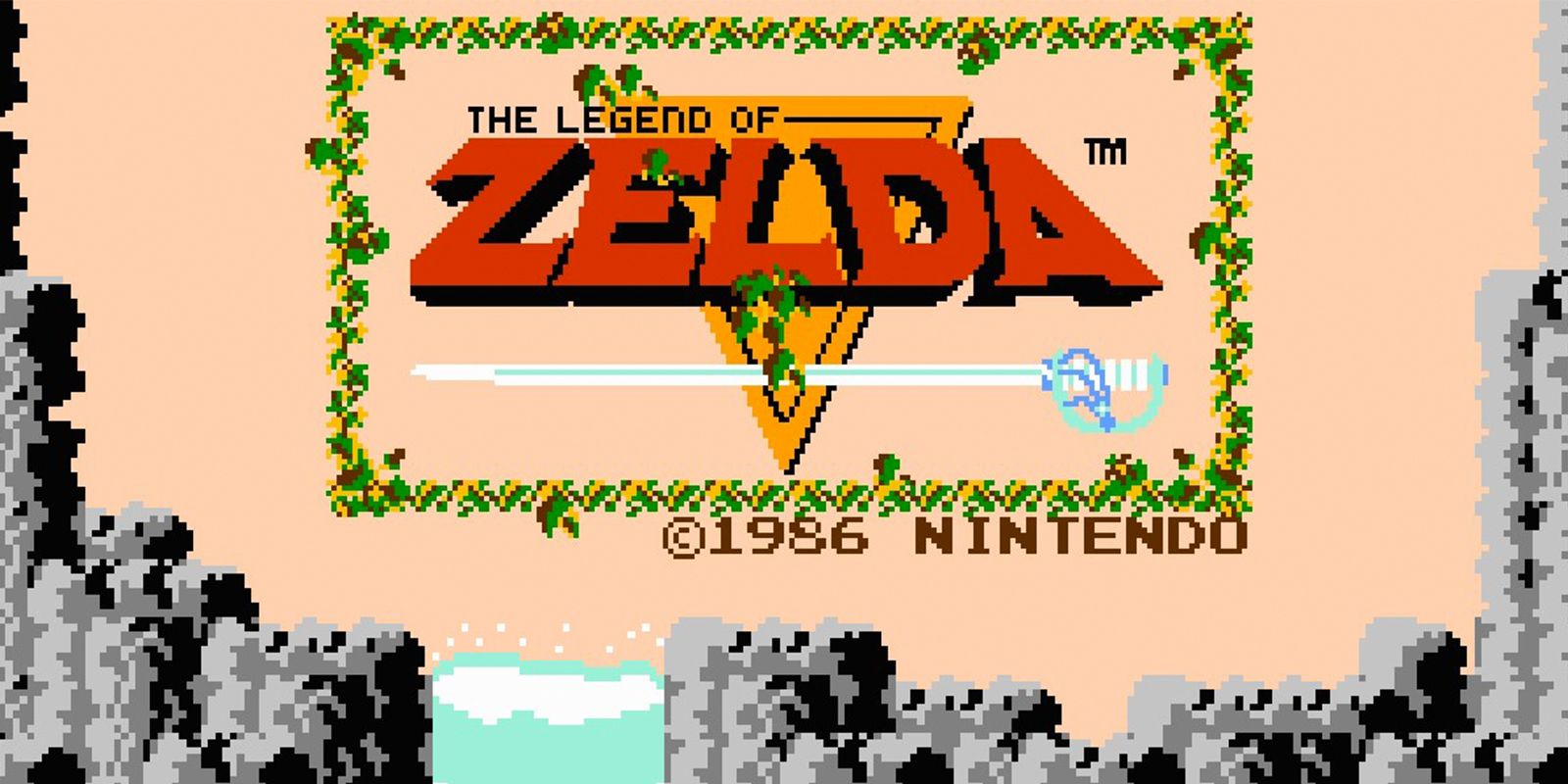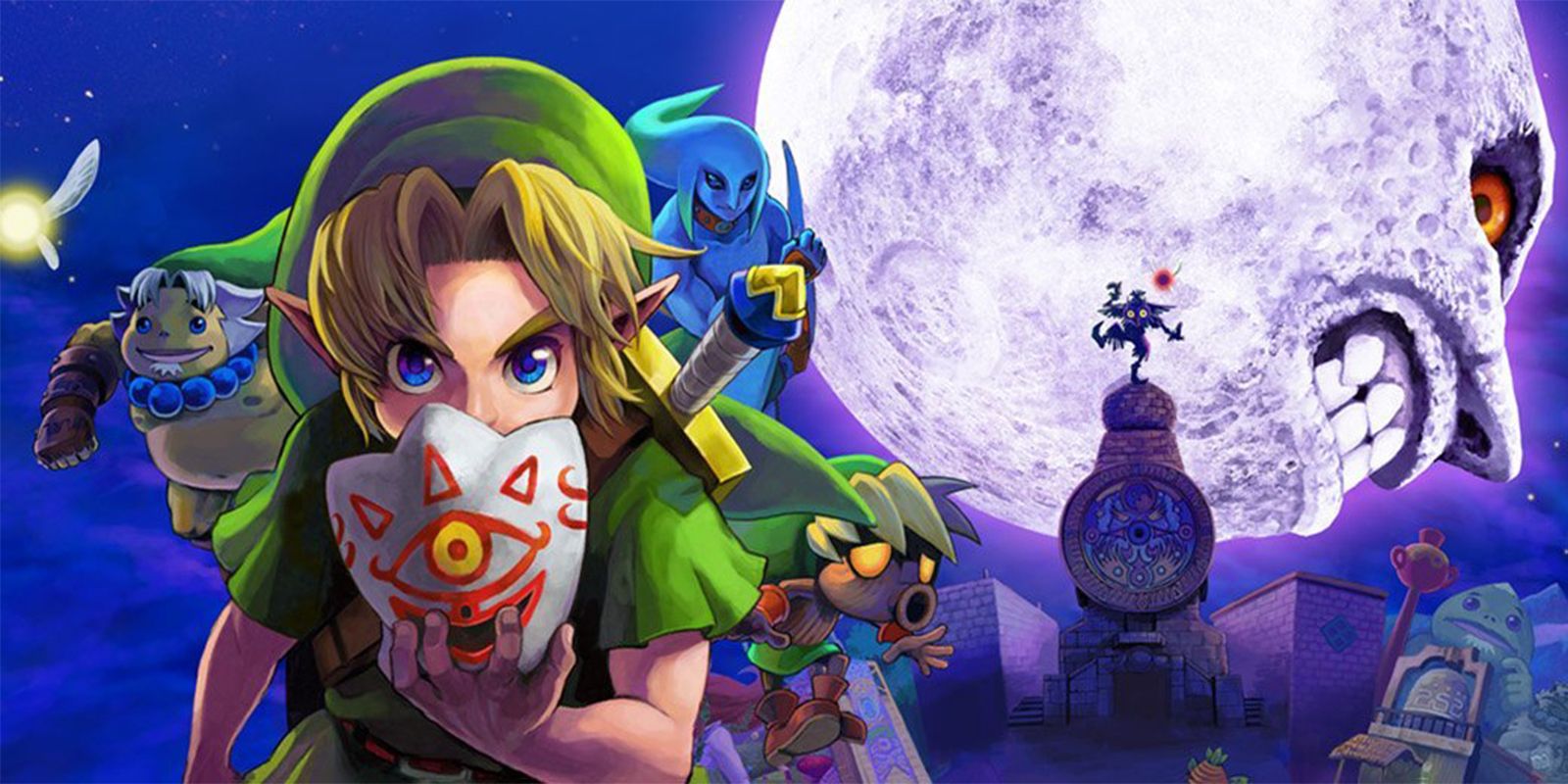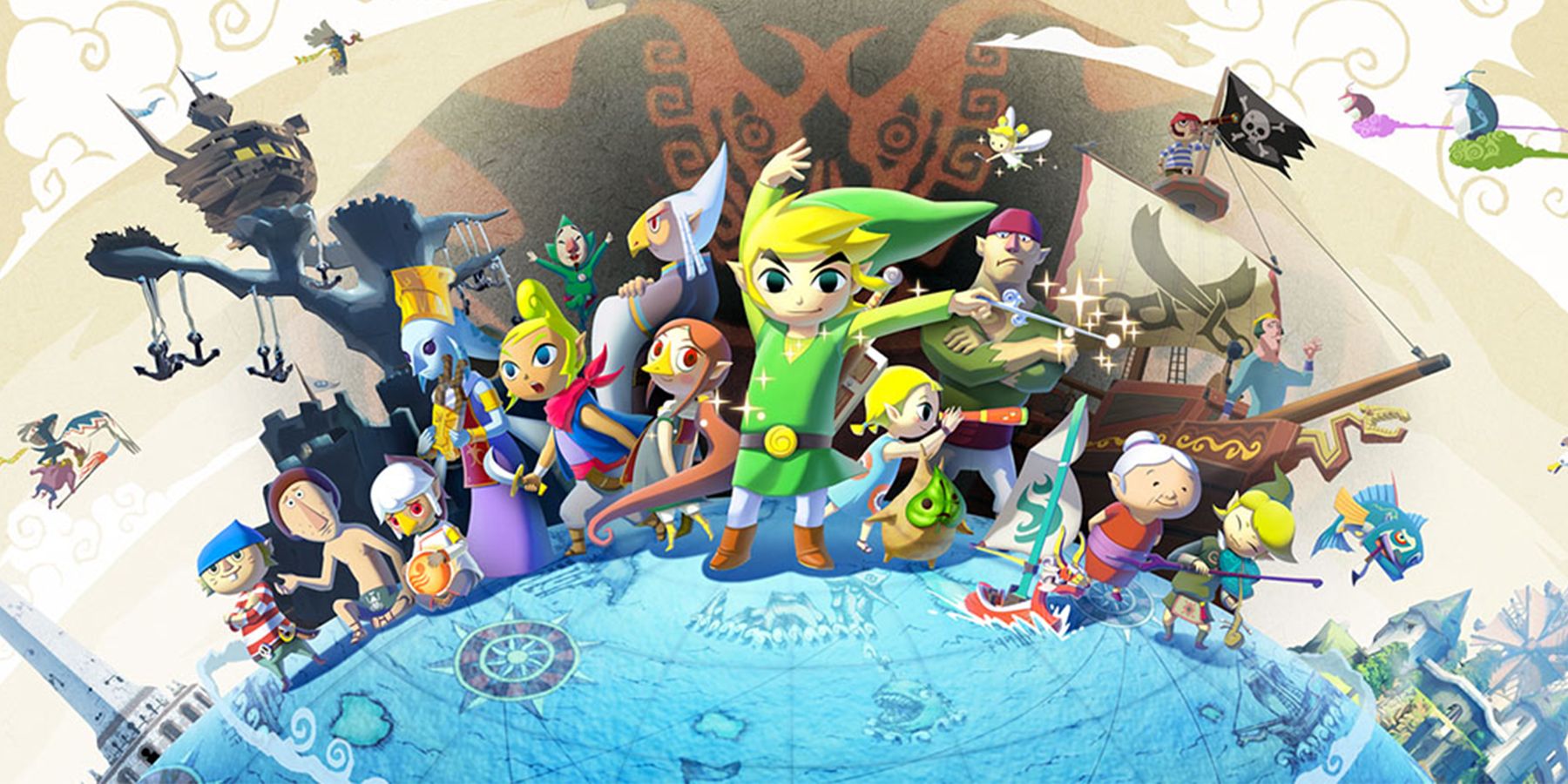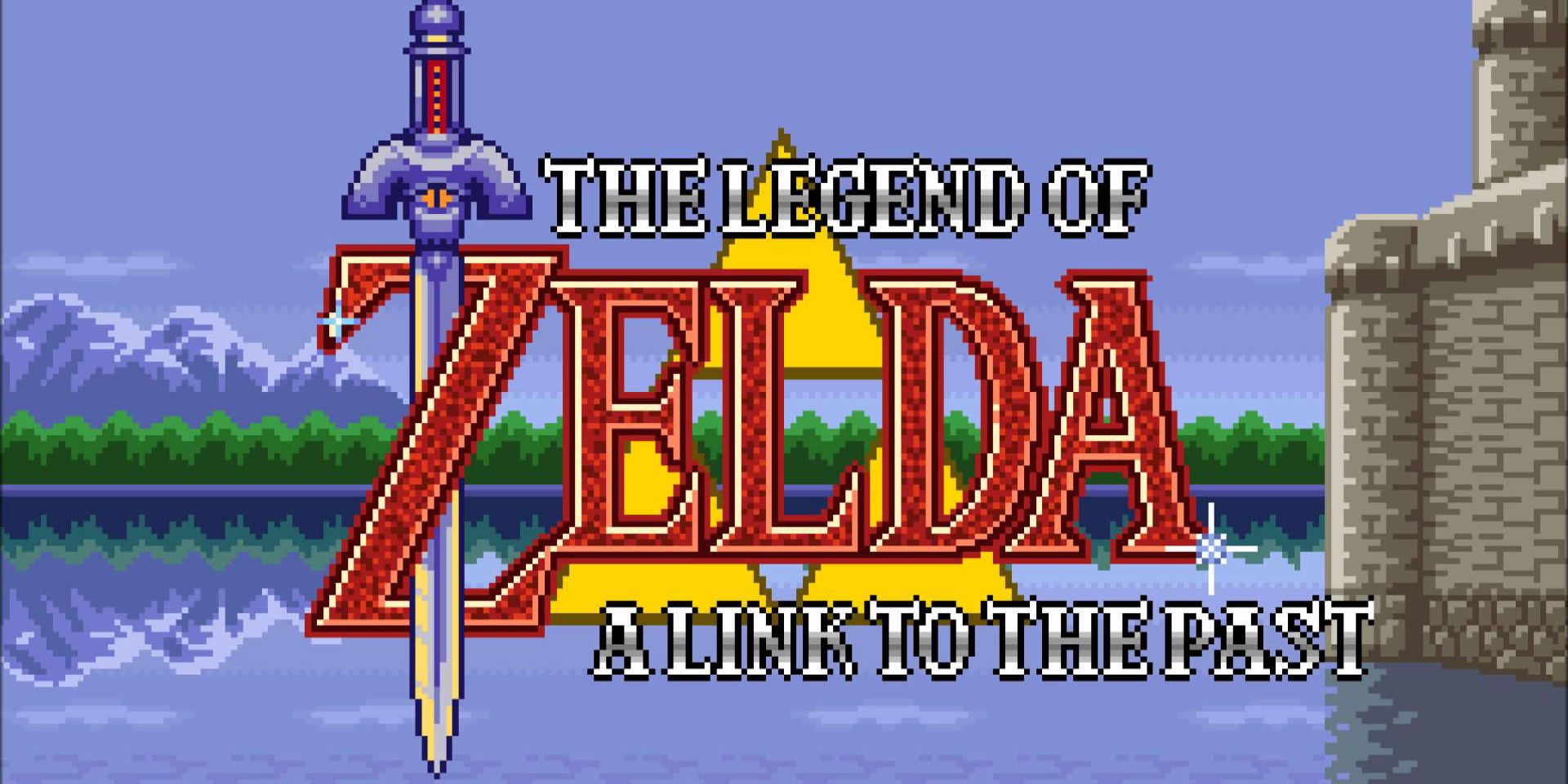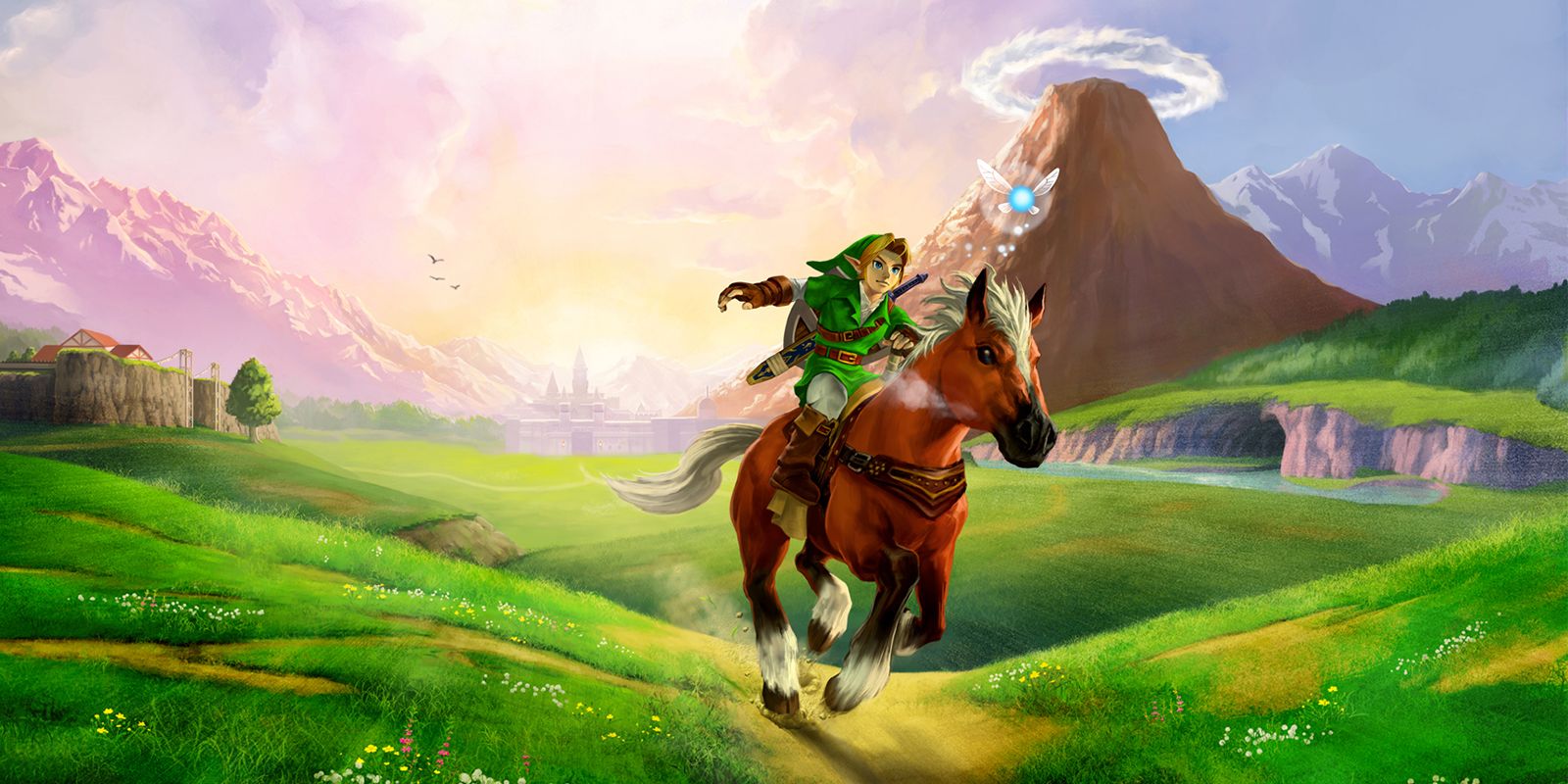After years of waiting, we're just weeks away from the highly anticipated next entry of the Zelda series, The Legend of Zelda: Breath of the Wild. We're kicking the Nintendo Switch launch rollout announcement off by counting down every main entry of the the Zelda series from worst to best. There are several notable spin-off games including Hyrule Warriors, Link's Crossbow Training or Tingle's Rosy Rupeeland (believe it!), but you won't find any of them on this list. We're choosing to streamline the selection by focusing on the entries Nintendo deemed canon in the official 2013 Hyrule Historia release.
Let's be clear--there are no bad entries in Nintendo's crown jewel The Legend of Zelda series. Some are better than others, but every game is built on thoughtful game design and is polished to a perfect finish. The Legend of Zelda series has given us classic after classic and it remains one of the most beloved series in the history of video gaming. Ease what's left of your wait for Breath of the Wild by reading our list of Every Legend Of Zelda Game Ranked Worst to Best.
16. TriForce Heroes
It's a little bit sad to say that the most recent entry to the franchise falls to the bottom of the list, but The Legend of Zelda: TriForce Heroes just didn't quite scratch the itch we've been fighting during the long haul between A Link Between Worlds and Breath of the Wild. TriForce Heroes is no failure by any means. It delivers a number of challenging puzzles, some especially compelling local co-op and continues the tradition of Zelda's Grade-A boss fights. Whenever a group of friends gathered together in a room, the game delivered on the classic Nintendo multiplayer experience they've become known for with the likes of Mario Kart and Super Smash Brothers. Unfortunately, the local multiplayer is also TriForce Heroes' biggest weakness.
When played with friends the game is a pure delight, but when flying solo, TriForce Heroes is nothing short of a blood boiling train wreck. The game is designed around co-op and, unlike Four Swords Adventures, TriForce Heroes' single player simply doesn't work.
15. Four Swords Adventures
The Legend of Zelda: Four Swords Adventures was the first in the series to experiment with a full-blown multiplayer mechanic and in true Nintendo fashion, it didn't disappoint. Utilizing the underserved Gameboy Advance peripheral on the Gamecube, Four Swords Adventures delivered a fun, frantic and one of a kind co-op experience that pitted friend against friend. The matches of Shadow Battle mode would run for hours and hours after you had finished the main Hyrulean adventure. The game was a fun distraction that tied Zelda fans over during the lull between Windwaker and Twilight Princess, but ultimately didn't really deliver on a full Zelda experience.
The co-op feature made for a really fun experiment, but the lack of challenging puzzles or a full blown single player adventure kept the game from reaching the heights of many of the best games in the series. It makes for a great entry point for your friends who have never played a Zelda game before, but otherwise feels like a "Zelda-lite"game that lacks the in-depth exploration fans and players have come to expect. The Legend of Zelda: Four Swords Adventures isn't the very best Zelda, but it's still very much worth every second of your time.
14. The Spirit Tracks
Nintendo's "All Aboard" the touch screen control option mentality worked for one game, but the question on every fans' mind was 'can they really pull it off for two?' The Spirt Tracks is a semi-sequel to The Phantom Hourglass set 100 years later in a new Hyrule founded by the characters from The Legend of Zelda: The Windwaker. The new Link is thrust into a runaway adventure when this incarnation of Zelda recruits his engineering skills to take her to the Tower of Spirits. As expected, things go wrong, Zelda's spirit is separated from her body and Link must use his train to fight for a group of spirits known as the Locomos.
The Spirit Tracks was a real treat for fans of The Windwaker storyline, but it didn't do much to help the argument for the Nintendo DS's Zelda touch controls. The train was a really exciting Epona and King of Red Lions replacement but remains one of the most forgettable means of travel for Link has ever used. There's nothing inherently wrong with The Spirit Tracks. In fact, there are several things to love about little engineer Link's adventure, but when push comes to shove, this game lives in the shadow of number of more memorable Zelda experiences.
13. The Phantom Hourglass
When Nintendo launched the revolutionary touch screen DS, fans were left wondering how Zelda would work with these non-traditional controls. The answer--very, very non-traditionally. Thanks to Eiji Aonuma's big push to defend the cell shaded Link, The Phantom Hourglass became a direct sequel to The Windwaker and was controlled entirely through the console's touch screen. Joined by the feisty yet cowardly world explorer, Linebeck, Link was determined to rescue Tetra and solve the mystery of the elusive ghost ship before his time ran out.
This new style made for an interesting change of pace in the gameplay. The controls combined with the game's "master dungeon" puzzle design made for a somewhat disjointed experience that didn't quite feel like the Zelda games we all knew and loved. This was a different game that was very special in its own right. It has innovative if a bit unorthodox multiplayer that is worthy of any diehard Zelda fans' time. The touch screen Zelda games will likely never be the most beloved in the series, but they admirably represent Nintendo's willingness to stand behind their ideas and non-conventional hardware.
12. The Legend of Zelda II: The Adventure of Link
It may seem like ancient history at this point, but back in 1987, The Legend of Zelda II: The Adventure of Link was a hugely controversial release that was not at all what fans of the first game expected. Before settling on a proper style for the series, Nintendo decided they wanted to experiment a little bit and the results were mixed. The top down camera was ditched in favor of the more popular side-scrolling genre on the NES. Despite the different stylings, the game still featured all of the things fans were asking for in their sequel including a bigger map, more epic boss fights and of a more defined story. Its biggest impact is undeniably its contribution to the series mythology by being the first game to describe the origin of the legend in The Legend of Zelda. This game explained why every Princess in Hyrule had been named Zelda and hints at the magic behind Link's reappearance as a different hero in each game.
The Adventure of Link featured a far more complex combat system and even smarter enemies. We may look at it and laugh today, but the innovations and ambition of the game at the time was huge. The Legend of Zelda II: The Adventure of Link may not be the most popular game in the series, but even its off-brand gameplay makes for an adventure worth taking.
11. Skyward Sword
The Legend of Zelda: Skyward Sword is the most recent console Zelda and it hasn't quite drawn the fanbase of its 3D adventure predecessors. Many players will blame it on the imprecise and exhausting controls or clunky Skyloft overworld design, but we think this game is just a victim of circumstance and timing. It was designed to be the game that lived up to the promise of the Wii that ironically served as its final swan song. The problem is, they delivered the game in 2011, years after many of the console's biggest fans had already moved on.
Sadly, those who didn't stick around missed out on some of the most creative puzzles ever incorporated in the series. Those who gave the built-from the ground up motion controlled Skyward Sword a shot were treated to the origin story of the Master Sword. The game follows Link as he leaves his home in Skyloft to explore the mysterious world below and he quickly learns that its more than meets the eye. The game required players to be precise in the way they swung their Wiimote at their enemies. This control mechanic made Skyward Sword one of the most combat oriented Zeldas yet by forcing player to think about what motions to perform in order to duel their enemies. It may be polarizing among the fans who played it, but there's no denying the game's ambition and top notch puzzle and game design.
10. Link's Awakening
Link's Awakening has the distinction of being the first handheld game in the Zelda series. The dream-like whimsey brought about by the game's story and Koholint Island setting made for a compelling first offering on the original gameboy. The game begins with Link washing up on the shore of the mysterious Koholint Island where he is forced to explore the land and complete quests to find the Wind Fish to return home. Link's Awakening started as an after-hours A Link to the Past port that became something altogether new once director Takahashi Tezuka and his team began experimenting with new dungeons. The passion project turned full fledged game was most impressive. The novelty of playing a Zelda game on the go was huge in 1993. Nintendo hadn't just released a pocket Zelda--they'd made another classic.
Link's first major side venture was packed with all of the rupee goods fans were looking for. There were challenging boss battles, a surprisingly sizable overworld and a handful of smartly designed dungeons. The game isn't particularly exceptional in any of those areas, but it still made for a great way to introduce newcomers to the series.
9. The Minish Cap
The Legend of Zelda: The Minish Cap took the series mythos all the way back to the roots of the Four Sword featured in Four Swords Adventure. In order to defeat the villainous Vaatii and rescue Hyrule, Link was forced to play a little game of Honey I Shrunk myself and before teaming up with the Picori. This micro-sized society aided Link as he adventured through the towns, mountains and forrests as an ant-sized Hylian. The game is widely known as "Green Hat Boy Begins" or the origin story of Link's green cap. It's a fun addition to the mythology, but the game adds little else to the series outside of another procedural adventure.
This entry in the series was developed by Capcom following the success of the Oracle of Seasons / The Oracle of Ages games and continued their tradition of striving to recreate instead of innovate. The Minish Cap it a great game full of plenty of really fun dungeons and terrains, but fans and gamers who expect more from their Zelda games will find the experience to be less memorable.
8. The Oracle of Seasons / The Oracle of Ages
The Legend of Zelda: Oracle of Seasons and Oracle of Ages was part of another one of Nintendo's adventurous handheld experiments on the Game Boy Color. Developed by a subsidiary of Capcom, the two games both started with cutscenes that hint at the symmetry of the two adventures. The Oracle of Seasons was a more combat driven game that gave Link the ability to change seasons and sent him on a quest to save Din from the evil clutches of Onyx, General of Darkness. Oracle of Ages, on the other hand, was a more puzzle driven experience that featured Link on a quest to save Nayru. These two titles aren't just listed together because of their simultaneous release date, but also feel like two halves of the same game. In fact, thanks to a special password system included in the game, the two were directly linked.
Players who beat both games would unlock special passwords they could use to input to unlock a secret boss fight that pitted Link against Twinrova and none other than the series' big bad, Ganon. These two games are the closest any non-Nintendo developer has gotten to cracking the secret behind the Zelda secret sauce. The dungeons were varied, the boss fights were impressive and the tales of rescue were satisfying. These games didn't do much to shake up the Zelda we knew, but the efforts to recreate a run-of-the-mill Zelda experience was fun and admirable enough to be remembered.
7. Twilight Princess
In many ways, The Legend of Zelda: Twilight Princess was the knee-jerk reaction to the backlash Nintendo received from the divisive art direction of The Windwaker. At the time, fans weren't as interested in the more animated Link traversing broad oceans, but instead wanted to see a bigger, bloodier and more robust version of the beloved Ocarina of Time. After numerous delays and a console launch later, fans were finally treated to just the game they wanted--or at least so they thought. The Legend of Zelda: Twilight Princess is packed to the brim with crowd-pleasing and fan service, but that doesn't mean the game can't deliver what is debatably the most epic game in the series yet.
Though it could be argued the game was too sprawling, most of us loved the massive maps, horseback swordplay, diverse selection of dungeons and more developed story. Each and every boss fight was more epic than the last and Link's Twilight adventure still feels like one of the highest stakes Zelda games to date. The game's pacing issues haven't aged as well over the years, but fans who want to feel like they are playing as Link in a western Lord of the Rings movie can't get any better than The Legend of Zelda: Twilight Princess.
6. The Link Between Worlds
After launching with a revamped version of Ocarina of Time in 2011, many fans wondered what an original Zelda on the 3DS would look like. Would it be a new full 3D style game or something different? After going through many different ideas, Miyamoto insisted the project revisit the top down 2D Zelda series. The final product was A Link Between Worlds, a pseudo sequel to A Link to the Past that shares a similar storyline and dungeon designs.
The boldness A Link Between Worlds lacks in narrative is made up for in the gameplay department. Instead of following the conventions of every game since the SNES classic, this game gives players the option to buy any item to use on any boss or in any dungeon which changes the entire flow of the game. A Link Between Worlds also adds an entirely new dimension to its puzzles by giving Link the ability to warp into walls. These new elements all add up to a game that challenges longtime Zelda fans to rethink what they thought the knew about the series.
5. The Legend of Zelda
After 30 years, the original The Legend of Zelda still holds the same level of quality and design perfection as it did on its release day. Sure, it's tough to navigate the game without the handy map included with the original game, but the lack of a clear direction was always The Legend of Zelda's biggest charm. Whether you were exploring a cave, inspecting the waterfall or banging your head through the wall as you explored the mazy forrest, the game never failed to create a since of wonder about what was lurking behind every door or cracked wall.
Every game in the series would come back to the concepts introduced in the original game one way or another. Even after all of these years, the upcoming The Breath of the Wild is still looking to the original game developed by industry legend Shigeru Miyamoto for inspiration. Golden game cartridge or not, the first The Legend of Zelda remains a legend worthy of your time and the series of sequels that have followed since.
4. Majora's Mask
The Legend of Zelda has been known for having a certain formula to it. Though the formula has clearly resonated and stood the test of time, Nintendo periodically tries something unconventional to keep fans on their toes from time to time. There are few bigger shake-ups in the series than The Legend of Zelda: Majora's Mask. Announced as Ura Zelda and coined the one year Zelda project by the The Legend of Zelda series Director / Producer Eiji Aonuma, Majora's Mask is without a doubt one of the weirdest games we've ever played. This adventure follows Link whose journey to find his missing fairy Navi takes him to oddly off-brand, yet familiar land of Termina. Upon arrival Link discovers that the moon is much larger than normal and is going to destroy the world in 3 days unless the titular mask is recovered and returned to its owner, the Happy Mask Salesman.
Let's make no stalfos-bones about it, Majora's Mask is an uncharacteristically unusual game. It's the Zelda game we like to say is Through the Linking-Glass meets Groundhog Day. The apocalyptic tone of the game that makes it so strange is also its greatest strength. Through its 3-Day time travel mechanic, Link is forced to choose how he spends his time before leaving that reality to its certain doom when he resets the world and does it all over again, just a little bit differently. What's the catch? It is impossible to meet every person, solve every problem and conquer every dungeon before the moon crashes at the end of that fateful 3 Day cycle which means some characters will be left without a happy ending. Majora's Mask may be the series oddball, but its willingness to go into darker and more ambiguous territory makes it a real stand out and the Empire Strikes Back of the Zelda franchise.
3. Windwaker
The Legend of Zelda: The Windwaker was a highly polarizing game when it was released. Fans had been eagerly anticipating the darker, "more realistic" take on Zelda they had seen in the Spaceworld 2000 teaser video, but were instead greeted by a much lighter version of Link at the same trade show a year later. Ironically, the very same cell shaded art style the game was criticized for has become its most timeless quality. Though the game still has its haters, many fans have come around to Link's first adventure sailing the Great Sea. Unlike Majora's Mask which served as an darkly satisfying side-adventure, The Windwaker felt like the next chapter in Hyrule's history following the success of Ocarina of Time.
The Kingdom of old had been washed away by the seas of time which allowed for an altogether new type of game that had Link traveling from island to island with a band of Pirates and his trusted boat,the King of Red Lions, in order to rescue his sister and unearth the evil that was plaguing the land. The game's story touches on some powerful themes of "out with the old, in with the new" and delivers a number of unforgettable boss fights and dungeons along the way. The Windwaker shook up the setting and and look of the series more than any entry before it and it remains an undeniable masterpiece and one of the best third person adventures ever made.
2. A Link to the Past
There is a heated argument among fans as to whether or not A Link to the Past is the best game in the series. The one and the only Super Nintendo Zelda delivered the sequel to the original game that fans had always wanted, but it didn't stop there. The game also established a number of the series' most beloved staples and traditions. It cemented the item-dungeon-boss fight method of gameplay and introduced the series' first use of musical instruments as a key element to puzzle solving. Hyrule was bigger and more sprawling than ever before and even included an entire dark world full of puzzles to boot. No matter how you spin it, The Legend of Zelda: A Link to the Past is undeniably one of the most important games in the franchise history.
After more than twenty five years, it remains the best of the top down Zelda game and one of the true classics of the SNES era. Link's quest to find the Master Sword, free the seven sages and rescue Princess Zelda from the clutches of Ganon was magical and wouldn't be topped, until receiving a proper successor six years later.
1. Ocarina of Time
The Legend of Zelda series is made up of nothing but truly exceptional games that have pushed the medium of gaming with each and every release. But no game in the series has been more important, impactful and closer to perfect than the series' first foray into 3D gaming on the N64, The Legend of Zelda: Ocarina of Time. The game brought the already beloved franchise to an entirely new generation with a whimsical story about a boy hero who sacrificed his childhood and traveled through time in order to save Princess Zelda and all of Hyrule from Ganondorf's evil rule. The sweeping story served as a vehicle for the brilliant dungeon design, revolutionary game mechanics such as the lock-on targeting system and the series most iconic soundtrack to date. This game quickly became the gold standard for third person adventure games at the time and thanks to a recent 3DS update, holds up just as well in 2017.
As Ocarina of Time is nearing its twentieth anniversary, it remains just as relevant to this day as it did at its launch. Ocarina of Time told a whimsical tale that changed the world of gaming and continues to live on through the generations of storytellers and game developers who have been inspired to pursue their passions in gaming games ever since.
--
Did your favorite game crack our top 5 Zelda games? Let us know by posting in the comments below!

